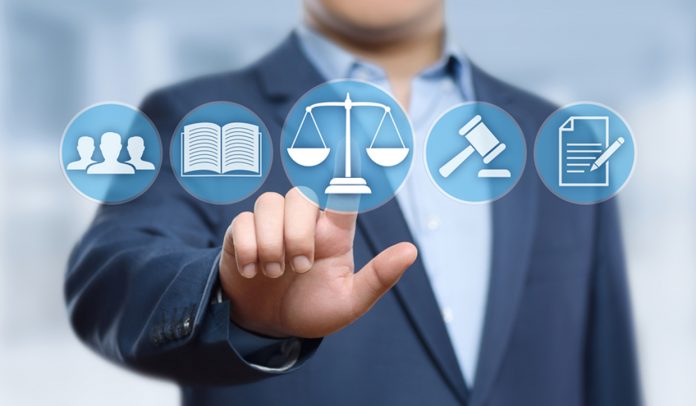This article is written by Geeta Sajjanshetty, an advocate of Karnataka High Court (Kalaburagi bench), pursuing a Diploma in Cyber Law, Fintech Regulations, and Technology Contracts from LawSikho.com.
Table of Contents
Introduction
A decade ago, it felt like technology had nothing to do with law, it was assumed technology was meant for those working in the IT sector and had no relationship with law whatsoever. We were proved to be completely wrong, there isn’t any area that is not conquered by technology, be it banking, health, insurance, agriculture. Technology has so much intruded in personal lives, it has become an essential part of life and the same stands true for an Advocate. Technology has eased a lot of tasks for lawyers. Once upon a time searching for any judgments meant either use the library of the court or rely on the support of well-established lawyers. Today searching for any judgments, reading up any academic articles, or listening to podcasts on legal issues are just a click away. There was a time when juniors had to slog for many years to learn, understand and get hold of legal concepts, however, with the advent of technology legal theories, issues, concepts, and knowledge of the law are now easily accessible for millions. This article tries to capture a bird eye view on the role of technology in the legal pursuits of advocates.
E-court app, information kiosk, and e-court website
A mobile-based e-court app has been introduced by the e-courts project of the Supreme Court to ease the access of vital information pertaining to cases in courts. This app is used by many to get information pertaining to cases. The app enlists information relating to evidence, interim orders, judgments, decrees, and proceedings of cases. The app is mobile-based and can be downloaded and accessed not just by advocates and their clerks, it could be used by litigants or any layperson. The app has saved many the trouble of visiting the court or meeting the lawyer for updates of the case. Case details can be accessed not only by the case number but also by keying the party name, there are several options for finding the status of the case. The ease of functions of the app makes it more relevant and simpler to get the information.
There was a time when all the lawyers used to invariably carry dairy every day to courts without fail to note the next date of the proceedings, however, with the onset of the e-courts app carrying the dairy along with the files every day is avoidable. The simple dairy has now been replaced by the e-court app, the routine work of a lawyer is getting evolved with the induction of mechanised way of getting things done. Reduction of routine clerical work saves a lot of time for the advocates from coordinating with their clerks, juniors, etc.
Information kiosks have been set up in all high courts and district courts to provide easy access to information to litigants and advocates and bridge the digital divide. The e-court websites of all districts could also be used to check the information pertaining to a case, cause list, list of sitting judges of the court, and many other details are also provided. With the penetration of information technology, the legal system is becoming more transparent, accountable, and cost-effective.
In the present scenario, litigants are more cautious, resourceful and want the justice delivery system to be more transparent and accountable. Information technology is bridging the gap. Gone are the days when the litigants used to trust every word of their advocates and did not bother the advocates after giving the brief. Clients want briefing on every proceedings, there are many software’s which are being used by lawyers to update their clients of every hearing, calculating time spent on each brief etc.
Impact on legal research
Be it finding a judgment, analysis of a legal concept, article on legal issue, lecture on legal provision, etc., all these tasks could be accomplished successfully without stepping into the library by just clicking on the internet. Indian legal database websites such as livelaw, Manupatra, Bar and Bench, SCC online have been proved to be of ample help providing the much-needed information which could be accessed in the comforts of the lawyer. These online legal portals devoted to legal issues, not only update the users with the new judgments but also provide diverse views, analysis, interviews, etc. The free legal website of Indian Kanoon has helped millions of lawyers to get judgments of any year on any given issue. Accessibility and availability of multiple resources online are touchstones of technology.
For academic lawyers who are engaged mostly in research, the vast amount of data available online has proved to be a boon, online desk research has become an essential component of the reports, comparative studies, and surveys. For instance, the study on Protection of Women and Children from Sexual Offences Act (POCSO) cases in India would look into the issue of the number of cases filed under POCSO all over India, the rate of convictions and acquittals of these cases, and sections under which these cases were filed. All this information could be gathered from the National Crime Record Bureau (NCRB).
- The NCRB is part of the Ministry of Home Affairs and has been set up to operate as a repository of information relating to crimes.
- Every year NCRB collects statistics and data from all over India and classifies them in various categories such as crime against women, children, offences by children in conflict with the law, offences under IPC, POCSO, and other laws.
- The NCRB report is published online, thus this authentic, valid, and online data could be accessed by the researcher within few clicks of the mouse, no need of collecting the information from all the high courts on the issue of POCSO cases, thus the virtual technology has simplified a lot of tasks for legal researchers.
- Many designated senior advocates, judges of the high court, and Supreme Court have been giving resourceful lectures, in-depth analysis of landmark judgments, simplifying complex legal concepts, etc, these lectures are available mostly on youtube and other online legal portals. These could be accessed free of cost.
Online hearings : the pandemic bringing an important change
The pandemic pushed most professions into operating in a virtual mode and in this course, the judiciary was not left behind, the courts went into online mode and started hearing cases virtually during the first wave of COVID-19, later with the reduction in the intensity of the hybrid system of the hearing was implemented providing the choice to the advocates to appear for a physical hearing or to appear for a virtual hearing. E-filing and e-payment of court fees have been adopted.
Arguing cases sitting in the comforts of our office has its advantages, reduces physical exertion, is cost-effective, increases the efficiency of the advocates as they can use their time effectively by engaging in activities such as reading, drafting, speaking to clients, and research while waiting for their turn for virtual hearing.
With online hearings, many senior advocates are arguing cases sitting in different locations, many lawyers based out of New Delhi are arguing cases in Supreme Court, thus accessibility has reduced the distance of the Supreme Courts. Today many young lawyers are seen to be arguing cases in the Supreme Court which was only a distant dream for many until now. Karnataka High Court started live streaming of cases from 31.05.2021 onwards, thus opening the doors of the Court live open to those who may want to watch the proceedings and arguments.
Digitisation of court proceedings at the High Courts has proved that we can not ignore technology anymore, however, issues of the digital divide need to be addressed. Advocates who are not adept at using technology and those from smaller cities and Talukas should not be left behind, appropriate training has to be designed for the advocates and court staff as well. Infrastructure at the district and Taluka level courts needs to be improved on par with the technology.
Challenges in using technology
The virtual hearings had its drawback, there has been the poor quality of audio, connectivity issues, at other times lawyers have appeared in bizarre dressing, one of the lawyers appeared in a vest for arguing a bail matter, another lawyer argued sitting in a car, in another instance, the Advocate was found to be smoking. The High Courts have been issuing guidelines for virtual appearances. Though all these issues have been streamlined, however, technology alone cannot be completely relied upon.
Conclusion
We cannot segregate law and technology and make them work in isolation. Technology is here to stay; we cannot ignore it, we will have to adapt to it. If advocates do not attempt to engage with the upcoming virtual trends in the legal industry, they could become irrelevant with time. Relying only on technology is no good, hybrid systems as is being followed in many places with both options being kept open, are ideal. Creating awareness and providing proper training for court staff, judiciary and advocates is the need of the hour. Justice should not be a privilege for few but it should be an entitlement for all.
References
- After Gujarat High Court Now Karnataka High Court Starts Live Streaming Of Court Proceedings On YouTube (livelaw.in)
- Lawyer appears in online hearing in vest, draws HC judge’s ire | India News,The Indian Express
- Lawyer sits in Car, argues Case, High Court unhappy (latestlaws.com)
Students of LawSikho courses regularly produce writing assignments and work on practical exercises as a part of their coursework and develop themselves in real-life practical skills.
https://t.me/joinchat/J_0YrBa4IBSHdpuTfQO_sA
Follow us on Instagram and subscribe to our YouTube channel for more amazing legal content.












